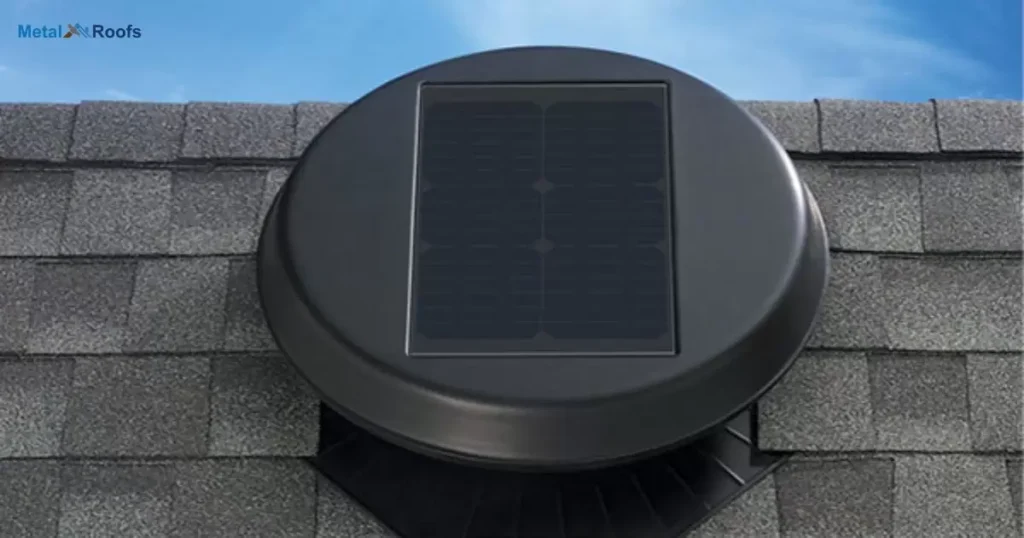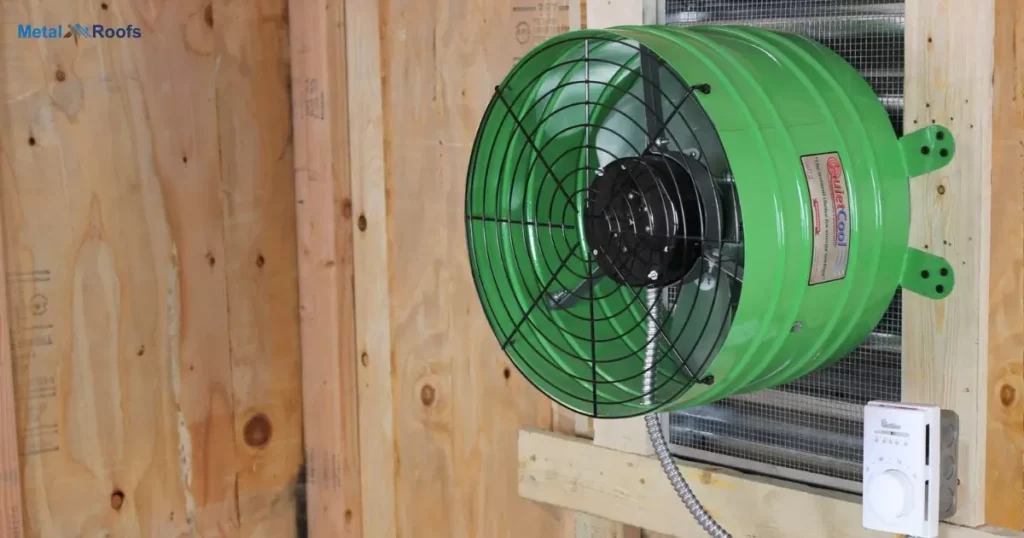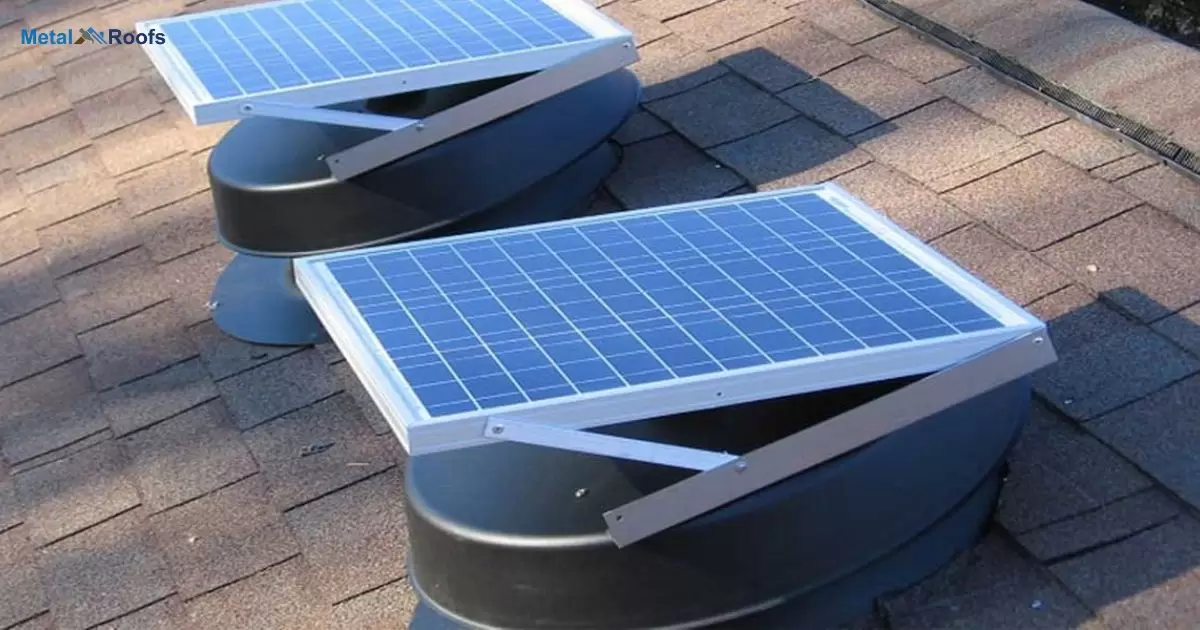Solar powered roof vents use sunlight to power fans that circulate air in your attic, reducing heat buildup and moisture, which can cause damage. These vents are installed on your roof to regulate temperature, keeping your home cooler in the summer and preventing mold and mildew growth. They are eco-friendly, cost-effective, and require minimal maintenance once installed.
Wondering if solar powered roof vents are worth it? These innovative vents utilize solar energy to keep your attic cool and dry, preventing damage and lowering energy bills. With their eco-friendly design and low maintenance requirements, solar powered roof vents offer a cost-effective solution to improving home ventilation.
Solar powered roof vents use sunlight to maintain optimal attic conditions, reducing energy costs and preventing moisture-related issues. Their eco-friendly design and low maintenance make them a practical choice for homeowners seeking sustainable solutions.
Key Takeaways
- Solar-powered roof vents harness sunlight to improve attic ventilation, reducing energy consumption and costs.
- They offer a sustainable solution, decreasing reliance on fossil fuels and lowering carbon emissions.
- While they have higher upfront costs, long-term savings on energy bills and potential tax incentives make them a worthwhile investment.
- Proper installation and regular maintenance ensure optimal performance and longevity.
- Effectiveness may vary in regions with inconsistent sunlight or extreme weather conditions.
- Consulting with a reputable installer can help assess suitability for your home and maximize benefits.
How Do Solar Fans Work?

Solar fans work by harnessing sunlight to power a small motor. This motor drives a fan, which draws hot air out of the attic. As sunlight hits the solar panel, it generates electricity, powering the fan continuously throughout the day.
Installing solar-powered attic fans is a smart investment for homeowners. Wide Is Metal Roofing This process helps regulate attic temperature, reducing heat buildup and easing the workload on your air conditioning system, providing a cost-effective and eco-friendly solution for improved ventilation and energy efficiency.
Why Are Solar Fans Worth it?
| Reasons | Explanation |
| Lower energy bills | Reduce strain on AC, leading to decreased energy consumption. |
| Long-term savings | Initial investment offset by savings on energy bills over time. |
| Extend roof lifespan | Prevent heat damage, thereby extending the roof’s longevity. |
| Eco-friendly | Harness renewable energy, reducing carbon footprint. |
| Maintain indoor comfort | Especially beneficial in hot climates, ensuring comfortable temperatures. |
| Cost-effective cooling | Efficient cooling solution with sustainable operation. |
Solar fans are worth it because they lower energy bills. They vent attics, reducing strain on AC. Installation costs might be high, but long-term savings compensate. Solar fans also extend roof lifespan by reducing heat damage.
They’re eco-friendly, harnessing renewable energy. In hot climates, they’re especially beneficial, maintaining comfortable indoor temperatures. Overall, solar fans offer cost-effective, sustainable cooling solutions for homes
A Cost-Effective Way to Cool Your Home
Solar-powered roof vents offer a cost-effective solution. These vents use sunlight to power fans that draw hot air out of your attic, reducing the need for air conditioning.
By harnessing solar energy, these vents operate silently and require no additional electricity, saving you money on utility bills. Plus, they help extend the lifespan of your roof by preventing heat-related damage. Consider investing in solar-powered roof vents for an efficient and budget-friendly way to keep your home cool.
An Eco-Friendly Way to Stay Cool This Summer

Consider installing solar-powered roof vents. These vents use renewable energy from the sun to cool your home by efficiently ventilating the attic, reducing the need for air conditioning.
Solar-powered roof vents are eco-friendly and cost-effective, offering energy savings while keeping your home comfortable. By harnessing solar power, they operate silently and require no electricity, making them an excellent choice for environmentally conscious homeowners seeking a greener way to stay cool during hot summer months.
Additional Benefits of Attic Ventilation
Attic ventilation offers several benefits:
- Moisture control to prevent mold and mildew.
- Prevention of ice dams in cold climates.
- Extended roof lifespan by reducing heat damage.
- Energy efficiency by easing HVAC strain.
- Preservation of insulation effectiveness.
- Prevention of structural damage like warped decking.
- Improved indoor air quality.
- Compliance with building codes for safety.
Solar Powered Attic Fan Installation
Installing a solar-powered attic fan involves several steps:
Assessment: Evaluate your attic’s size and ventilation needs. Determine the optimal location for the fan.
Selecting the Fan: Choose a solar attic fan appropriate for your attic size and roof type. Consider factors like airflow capacity and warranty.
Preparing the Installation Area: Clear the attic space around the installation site. Ensure there’s enough room for the fan and that the area is free of obstructions.
Cutting the Hole: Mark the location for the fan on the roof and cut a hole according to the manufacturer’s instructions. Use appropriate safety gear and tools.
Installing the Fan: Place the fan over the hole and secure it according to the manufacturer’s guidelines. Seal around the edges to prevent leaks.
Wiring: Connect the fan’s wiring to the solar panel. Ensure proper connections and follow electrical safety precautions.
Mounting the Solar Panel: Install the solar panel in a location with maximum sunlight exposure. Secure it to the roof using appropriate mounting hardware.
Testing: Test the fan to ensure it’s functioning correctly. Check for proper airflow and ensure the solar panel is charging the fan’s battery.
Final Checks: Inspect the installation for any issues or leaks. Make any necessary adjustments or repairs.
Maintenance: Regularly clean the fan and solar panel to maintain optimal performance. Check for debris or obstructions in the fan’s airflow path.
Monitoring: Monitor the fan’s performance over time. Ensure it’s effectively ventilating the attic and contributing to improved energy efficiency.
Professional Assistance: If you’re not comfortable with any aspect of the installation, consider hiring a professional to ensure the job is done safely and correctly.
By following these steps, you can effectively install a solar-powered attic fan to improve ventilation and energy efficiency in your home.
Solar Attic Fan Vs Electric
Solar attic fans and electric attic fans both serve the purpose of ventilating the attic space, but they differ in their power source and some other aspects. Here’s a comparison:
Solar Attic Fan:

Power Source: Solar attic fans are powered by sunlight. They have a built-in solar panel that converts sunlight into electricity to operate the fan motor.
Energy Efficiency: Solar attic fans are highly energy-efficient since they don’t rely on grid electricity. They operate silently and have no operating costs once installed.
Installation: Installation is generally easier for solar attic fans since they don’t require electrical wiring or access to a power source. They can be installed in remote or off-grid locations.
Cost: Solar attic fans tend to have a higher upfront cost due to the inclusion of solar panels and associated components. However, they offer long-term savings on energy bills.
Environmental Impact: Solar attic fans have a lower environmental impact compared to electric attic fans since they use renewable energy from the sun.
Electric Attic Fan:

Power Source: Electric attic fans are powered by electricity from the grid. They require wiring and access to an electrical outlet for operation.
Energy Efficiency: Electric attic fans can be efficient, but they contribute to energy consumption and may increase electricity bills, especially if used frequently.
Installation: Installation of electric attic fans may be more complex and require professional electrical work to connect them to the power source safely.
Cost: Electric attic fans typically have a lower upfront cost compared to solar attic fans. However, they incur ongoing operating costs due to electricity consumption.
Reliability: Electric attic fans may be more reliable in areas with inconsistent sunlight or during periods of low solar activity. They can operate regardless of weather conditions.
Frequently Asked Questions
How long do solar roof vents last?
Solar roof vents typically last between 10 to 20 years, depending on factors such as quality of materials, maintenance, and environmental conditions.
Is a power roof vent worth it?
Yes, a power roof vent can be worth it for improved attic ventilation and energy efficiency, especially in areas with hot climates or insufficient natural airflow.
What are the disadvantages of solar fans?
Disadvantages of solar fans include higher upfront costs compared to electric fans and reduced effectiveness in areas with limited sunlight or during cloudy weather.
Conclusion
In conclusion, solar powered roof vents offer a compelling solution to common household issues. By harnessing renewable energy, these vents effectively regulate temperature and humidity levels, enhancing home comfort and reducing energy bills. Their minimal maintenance requirements make them a practical and sustainable investment for long-term benefits.
The eco-friendly nature of solar powered roof vents aligns with the growing trend towards sustainable living. With their ability to mitigate moisture-related problems and improve indoor air quality, these vents provide homeowners with peace of mind.











